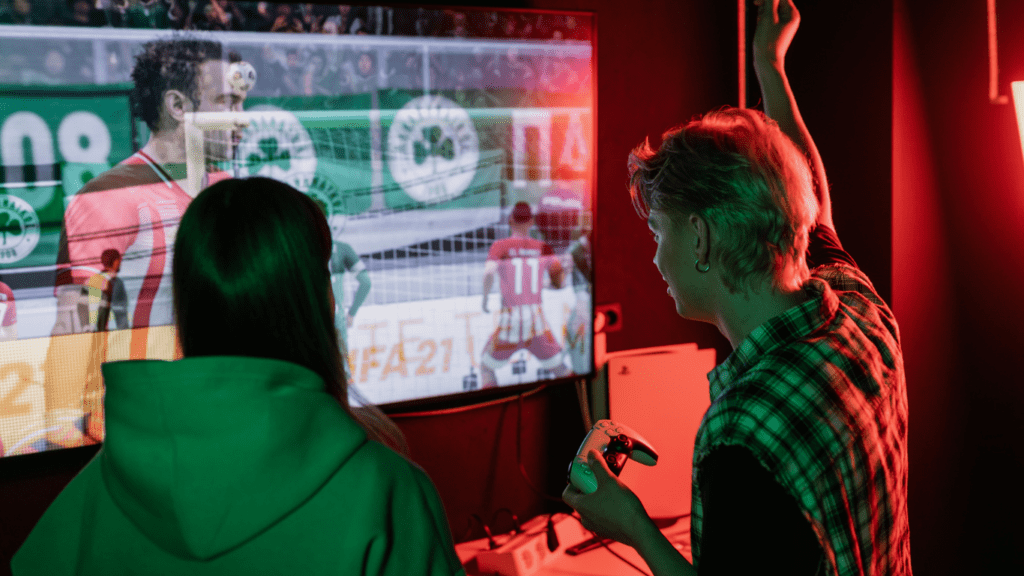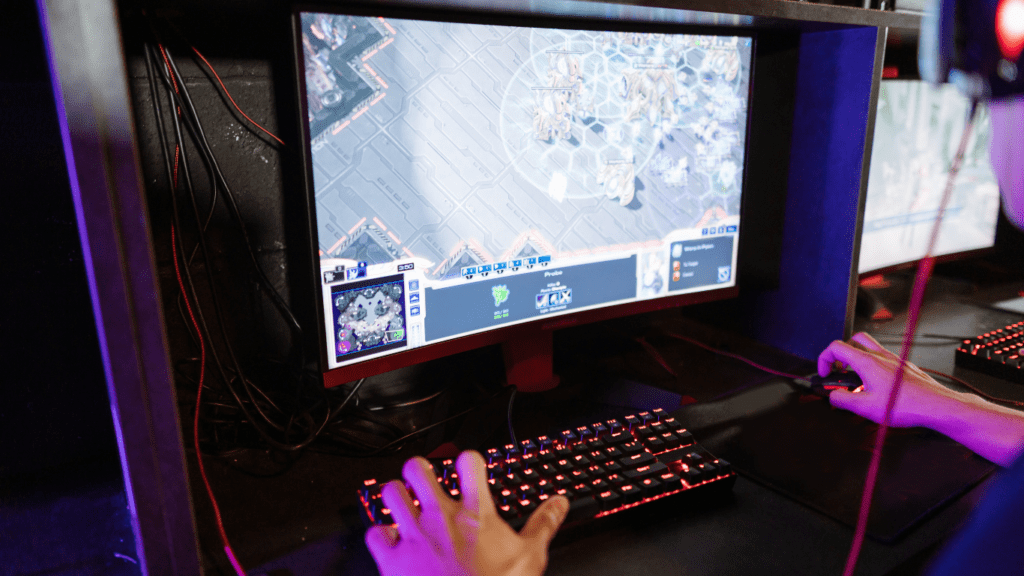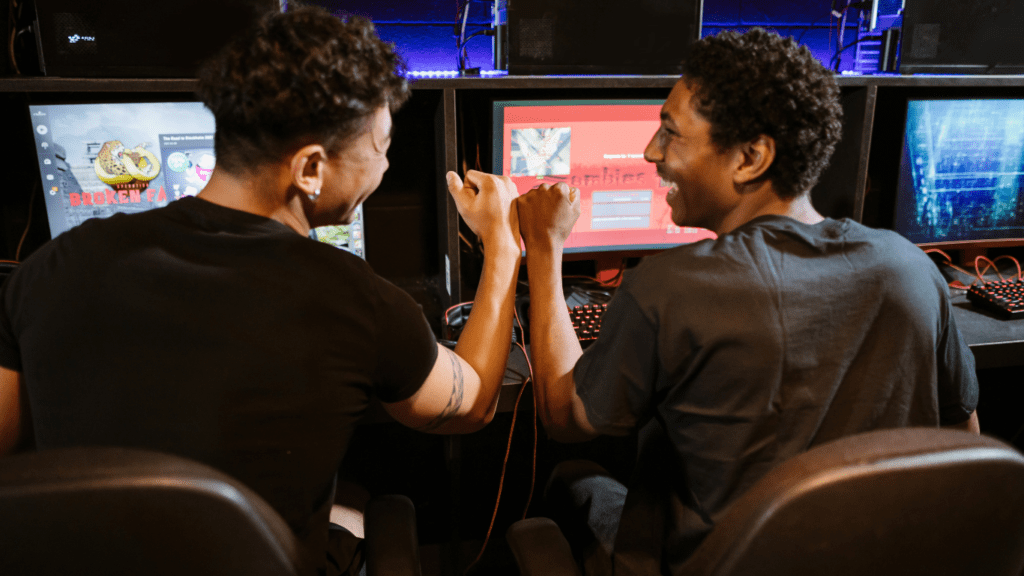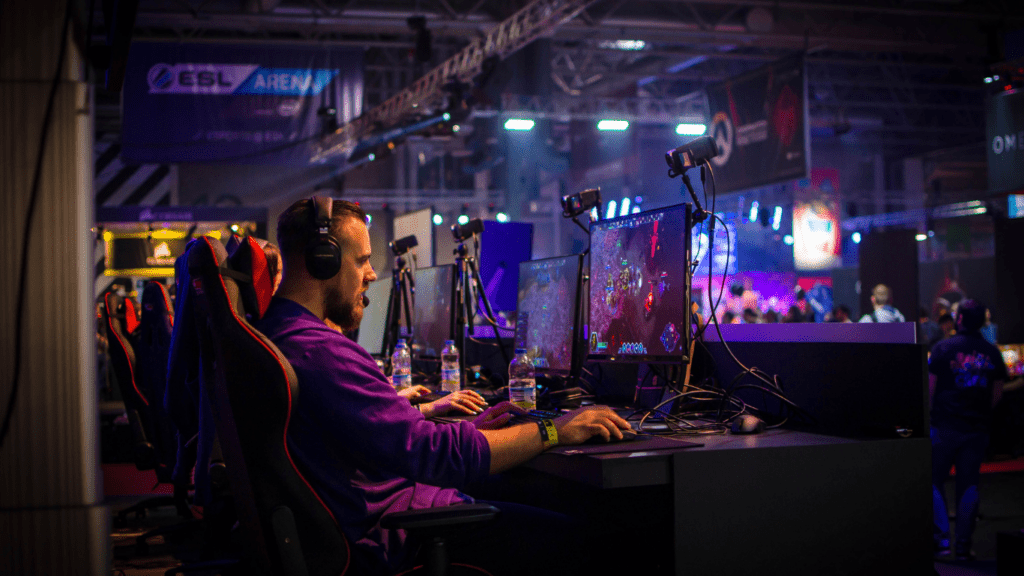Understanding Esports and Traditional Sports
Both esports and traditional sports play pivotal roles in shaping modern entertainment. Esports continues to grow its audience, while traditional sports capitalize on rich historical contexts.
Defining Esports
Esports, or electronic sports, involves competitive gaming where players or teams face off in video games. Recognized titles include “League of Legends”, “Dota 2”, and “Counter-Strike: Global Offensive”.
Professional esports tournaments feature live audiences and online streaming, drawing millions of viewers globally. Notably, esports organizations offer structured leagues and sponsorships, reflecting the industry’s professionalization.
An Overview of Traditional Sports
Traditional sports comprise long-standing athletic competitions such as football, basketball, and soccer. These sports depend on physical prowess, teamwork, and strategic planning.
With roots dating back centuries, they enjoy worldwide popularity, with events like the Olympics and FIFA World Cup garnering significant global attention.
Traditional sports have established systems of training, officiating, and commercialization, contributing to their widespread appeal and sustainability.
The Intersection of Esports and Traditional Sports
Esports and traditional sports increasingly cross paths as their structures and strategies intertwine, bridging digital and physical realms.
Similarities in Structure and Competition
Formats in both esports and traditional sports incorporate leagues and tournaments. In esports, games like:
- League of Legends
- Call of Duty
host global championships with tiered levels, mirroring systems like the NBA Playoffs or the FIFA World Cup. Governance involves rule enforcement and arbitration, with esports entities ensuring fair play just as sports federations regulate conduct. Prize pools in both realms reach millions, incentivizing top-tier performance and attracting massive audiences.
Influences on Athlete Training and Strategies
Esports athletes integrate physical training to enhance reflexes and endurance. As esports require sustained focus, the incorporation of fitness regimes parallels traditional sports routines, where physical conditioning optimizes peak performance.
Strategic analysis in esports leverages data for tactical advantages, similar to video analysis in football or basketball. Traditional sports teams advise esports players on teamwork and adaptability, promoting cohesion within gaming squads akin to that in sports units.
The Impact on Audiences and Viewership
Esports and traditional sports increasingly intersect, reshaping how audiences engage with competitive events. Viewership trends reveal critical shifts influenced by this convergence.
Esports’ Rising Popularity

- Esports captivates audiences with immersive and interactive experiences.
- In 2023, esports viewership exceeded 532 million globally, according to Newzoo.
- Young fans, drawn to dynamic gameplay and community interaction, drive this growth.
- Platforms like Twitch and YouTube offer live broadcasts and exclusive content, enhancing accessibility.
- High-profile tournaments attract millions of spectators and generate significant sponsorship deals, reinforcing esports’ mainstream appeal.
Traditional Sports Adapting to Digital Platforms
- Traditional sports embrace digital integration to retain relevance.
- Leagues stream events online to reach tech-savvy audiences who prefer accessing content on-demand.
- The NBA Pass and NFL Game Pass exemplify this shift, offering personalized viewing experiences.
- Interactive features, like real-time stats and social media integration, enrich fan engagement.
- Partnerships with gaming companies further bridge the gap as sports franchises launch e-leagues, tapping into the global esports audience while enhancing their digital footprint.
Economic and Cultural Implications
The blending of esports and traditional sports is creating new economic dynamics and cultural shifts, impacting various sectors. Revenue streams diversify as both industries recognize mutual growth opportunities.
Sponsorship and Advertising Opportunities
Esports and traditional sports offer lucrative sponsorship and advertising platforms. Global brands invest heavily in esports, attracted by engaged digital audiences and interactive formats.
Companies like Intel, Coca-Cola, and Audi sponsor esports tournaments, aligning with tech-savvy demographics. In contrast, traditional sports maintain robust sponsorships but adapt strategies to engage younger fans through digital channels. Cross-promotion in integrated events increases brand visibility across diverse audience segments.
Cultural Acceptance and Integration
Cultural perceptions of esports shift towards greater acceptance, with increased integration into mainstream entertainment. Esports clubs collaborate with traditional sports teams, like the partnership between NBA franchises and NBA 2K League teams, which broadens exposure and legitimacy.
This collaboration influences fan bases, fostering inclusivity and breaking stereotypes about gamers. Educational programs and university scholarships in esports promote diversity and endorse esports as a viable career path, mirroring traditional sports frameworks. These factors accelerate cultural assimilation, positioning esports alongside traditional sports in global culture.
The Future of Esports and Traditional Sports
Esports and traditional sports continue to intertwine, leading to exciting prospects and evolving landscapes in competitive entertainment.
Potential for Collaboration
Esports and traditional sports offer immense collaboration potential, with shared opportunities for mutual growth. Professional teams are increasingly forming partnerships to engage broader audiences and boost brand presence.
For instance, soccer clubs create esports divisions to extend their reach into gaming communities. Stadiums host joint events, uniting fans of both realms and enhancing experiential offerings.
Educational initiatives also expand as institutions incorporate esports into sports management programs, highlighting key synergies in their administrative and strategic practices.
Challenges and Opportunities Ahead
Rapid digital evolution presents unique challenges and opportunities for esports and traditional sports. Regulatory frameworks need to adapt quickly to address issues like fair play and athlete welfare. Both arenas face the task of ensuring ethical governance and maintaining integrity as commercial interests grow.
Conversely, technological advancements create opportunities for innovation in areas like interactive fan experiences and player engagement. The development of cross-platform media strategies can enhance visibility and connect diverse fan bases, positioning both sports for sustained growth and integrated participation.



 Senior Sports Writer
Alfred Alder is the senior sports writer at Sprint Scoop News, bringing his extensive knowledge of fitness, training, and sports business to the forefront. With a career spanning more than a decade, Alfred specializes in delivering high-quality, engaging content that covers everything from sponsorship trends to the latest in health and nutrition for athletes. His deep understanding of the sports industry allows him to provide readers with comprehensive insights that make complex topics accessible and exciting.
Senior Sports Writer
Alfred Alder is the senior sports writer at Sprint Scoop News, bringing his extensive knowledge of fitness, training, and sports business to the forefront. With a career spanning more than a decade, Alfred specializes in delivering high-quality, engaging content that covers everything from sponsorship trends to the latest in health and nutrition for athletes. His deep understanding of the sports industry allows him to provide readers with comprehensive insights that make complex topics accessible and exciting.
